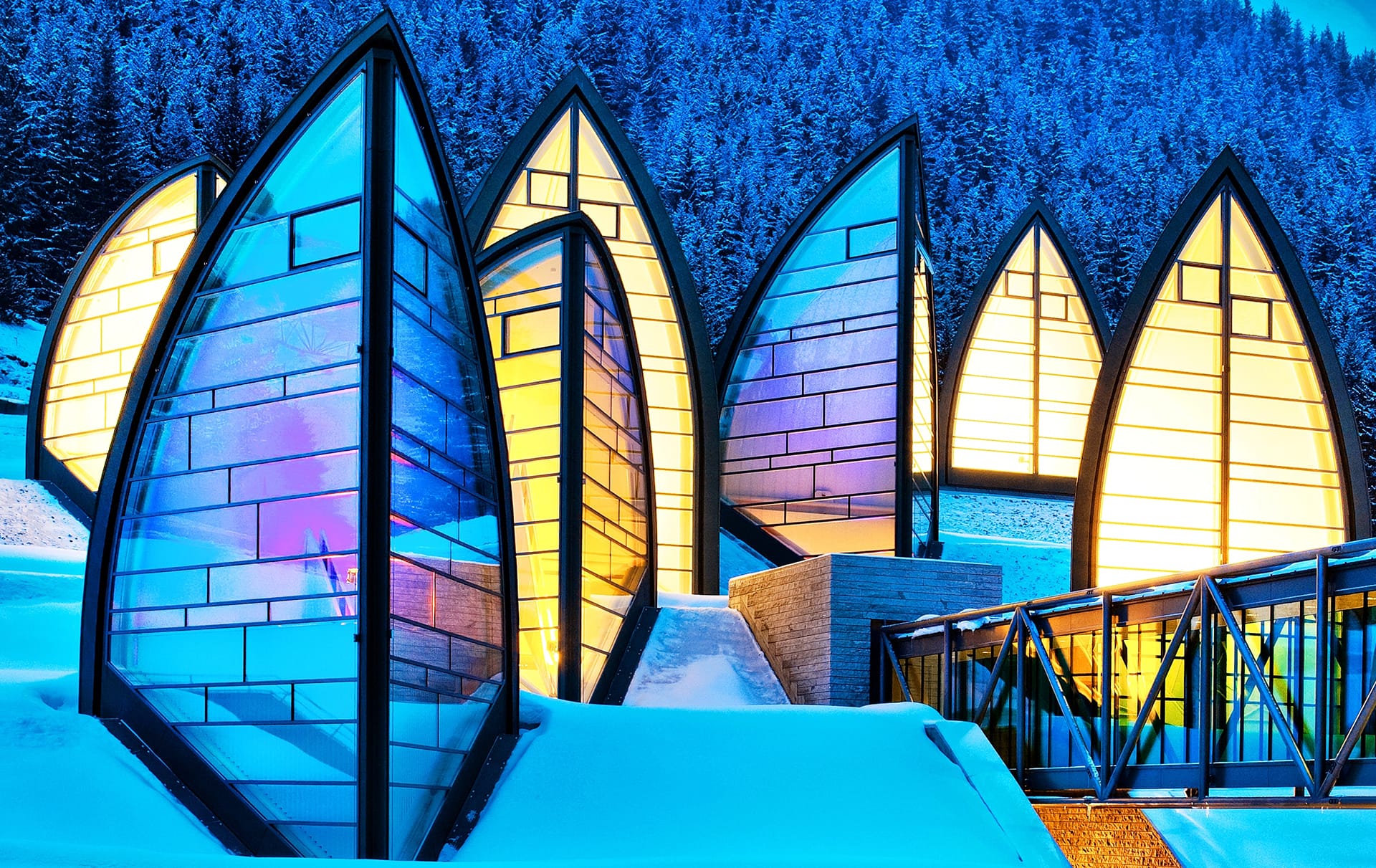This Under-the-Radar Swiss Ski Resort Is a Design Lover’s Paradise
With a modernist spa by architect Mario Botta and designer Carlo Rampazzi’s sublime interiors, the Tschuggen Grand Hotel in Arosa is ripe for rediscovery

The opening of the five-star Tschuggen Grand Hotel in 1929 earned Arosa, Switzerland, exalted status as the most desirable high-end winter ski resort in the Alps. Though in the decades that followed, its exclusive cachet as one of Switzerland’s highest-elevation retreats was soon out-glitzed by other ascending mainstays in the Canton, namely St. Moritz. By the time the early aughts arrived, Tschuggen was ready to herald a new era, not just as an updated resort for outdoor purists, but as a retreat for guests seeking a rural tonic 5,904 feet above sea level.

To usher in a new chapter, Italian designer Carlo Rampazzi was commissioned to wholly revamp Tschuggen’s dated interiors, while legendary architect Mario Botta was brought on to dream up an ultra-modern 54,000-square-foot spa complex called Bergoase. Tschuggen then constructed a private gondola to whisk guests to the Arosa Lenzerheide ski area without leaving the hotel grounds. Today, it’s fair to say that the Tschuggen Grand is grander than ever.

Botta’s Borgoase Spa could be described as an aesthetic foil to the hotel’s block high-rise exterior and swish chalet-inspired interiors. In the hotel’s lobby and restaurants—one of which, La Brezza, has two Michelin stars—the scene is set with plush leather banquettes, plaid upholstery, and wood beam ceilings. Its 128 individually-appointed rooms and suites benefit from a heftier infusion of Rampazzi’s polychromatic whimsy. Soft textures and warm saturated hues are a soothing contrast to the craggy snow-covered mountain peaks framed by the rooms’ south-facing windows, the cocoon-like setting amplified by colored ceilings and decorative accouterments such as embroidered headboards and high pile rugs. Botta’s modernist annex, however, uses other means to stimulate the senses, leaning instead on natural light, undulating walls, organic shapes, and a monochromatic palette. Perhaps most enticing is that, like an iceberg, the majority of his landmark building lies beneath the surface, leaving the surrounding wilderness undisturbed.

To understand the genesis of Tschuggen’s Bergoase Spa, according to Botta, is to investigate the inception of every man-made structure: “Architecture comes from a sign drawn on a piece of paper, which is then transferred as a limit on the ground to distinguish and separate an interior from an exterior,” the architect tells Galerie. “This peremptory choice is peculiar to an architectural project; it represents a deed that takes possession of the ground and divides what is natural from what is artificial.”
Botta sees this prelude to tridimensional construction as what effectively establishes a building’s relationship with the landscape; in other words, no man-made form can exist purely as a self-contained or self-referential object. “Its raison d’être is the confrontation with the context, in the dialogue with the complexity of the surrounding space,” he continues.

Arosa is ensconced in a scenic sheltered basin above the Schanfigg Valley, so the last thing Botta desired was for new construction to pockmark the precious landscape (“To build without building”). The solution? Tuck the spa into the mountainside. “The choice of affecting the territory as little as possible led to the reduction of the excavation works and adapting the disposition of the spaces to the natural layout of the mountain,” he adds. The sole evidence of hypogeal construction would be a cluster of nine triangular skylight “sails” constructed of titanium, zinc, and glass, overlooking the mountain like a Swiss guard of abstract moai.


Concealed beneath a grass lawn is the four-story subterranean spa, which boasts state-of-the-art fitness facilities, 12 private treatment rooms, and saunas hewn of granite and maple wood. On the top floor, directly beneath the skylights, is Botta’s “waterworld”: a hydrotherapy temple with multiple indoor and outdoor pools, hot tubs, and rain curtains. “The aim of the project ensures not only the enjoyment of body treatments, but also an emotional experience that combines the sense of contemplation and protection with the perception and the sharing of nature,” describes the architect. “Ultimately, the choice to place most of the building underground was a way to reduce the surface above ground, to preserve an extraordinary part of the landscape, and to establish a respectful relationship with the nearby village.” Swiss ambition at its finest.